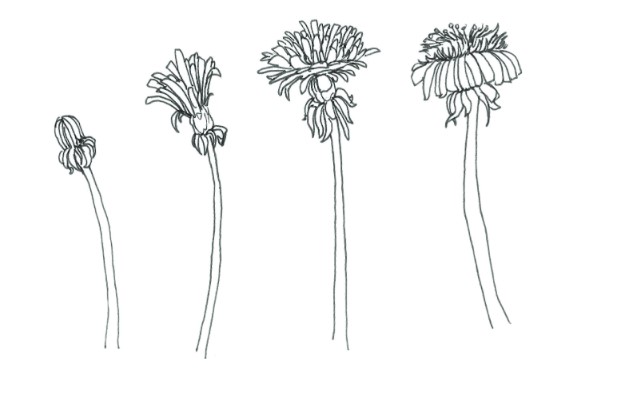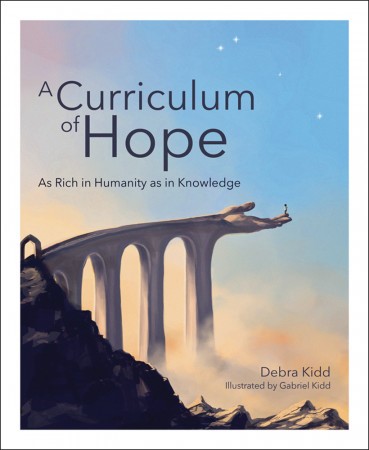To the Pedagogical Activists of the World
Charlie McChrystal’s council house garden was a bit of a mess. The inside of the house was spotless – my grandma made sure that every corner was cleaned within an inch of its life; the doorstep was whitewashed; none of their meagre possessions out of place. But the garden was overgrown with dandelions and buttercups.

Charlie McChrystal fought in the First World War. His first wife and their only child died in the Second. He was a broken, flawed man by the time I knew him, most alive and happy when distracted by Laurel and Hardy. As a child I was a little afraid of him, but every now and then a playfulness would break out in him and the sun would appear. It was rare, but we basked in the warmth of that sunlight when it shone.
Charlie McChrystal didn’t talk about the war much. His sister told us how he had signed up with his friends from the small town they came from – Padiham in Lancashire – and how, when marching to the trenches of Ypres, he had stopped to pee behind a tree. As he looked on his pals were killed by a shell as they walked ahead. He never spoke of this to us, but even as children we knew he carried pain.
Charlie McChrystal wouldn’t dig up dandelions. He wouldn’t let others dig them up either. Because to him the dandelion was the only glimmer of hope in the hell hole of the trenches. The one ‘bugger’, as he put it, that you knew would survive. To his mind there were no weeds, just life.
Charlie McChrystal didn’t value education much. He encouraged his own children to leave school and earn a living as fast as possible. They lived in abject poverty, and education was seen as a luxury they couldn’t afford. When a neighbour donated a piano to the family, he chopped it up for firewood. But he fathered a child who would go on to encourage her own children to learn, whose mantra was ‘Don’t be like me – get an education.’ Charlie McChrystal bred a rebel in Florence McChrystal. My mum. A dandelion.
I pray that we, and our children and their children, never see what Charlie McChrystal saw and that our world moves towards a time when no child or adult experiences the horrors of war or the kind of grinding poverty that my own parents grew up in. But if I say to teachers that we need to be the dandelions in the education system – pushing up through the cracks and resisting the performance-related pressures that can lead us to act without integrity or compassion – I hope that you will understand what I mean. And that you will take a moment to think of Charlie McChrystal, whose education and understanding of the world was forged in war and loss, but who nevertheless held on to hope. – Debra Kidd
In her new book, A Curriculum of Hope, Debra outlines an approach for bringing such a hopeful curriculum to life and offers examples from across the world of how schools are doing just that – despite the constraints of national, political and parental expectations. She has previously described this process as pedagogical activism, the small acts of resistance that teachers can implement in their classrooms to effect change. No curriculum can come to life without pedagogy. Curriculum may be the map, but pedagogy is the means of transport – and believe it or not teachers have more autonomy than they think. Like weeds growing through cracks in concrete, hopeful and humane curriculum models are flourishing, and Debra’s book celebrates them.

Format: Paperback
Pages: 168
Size: 222 x 182mm
Published: January 2020
ISBN 13: 9781781353424
Written by Debra Kidd, A Curriculum of Hope: As rich in humanity as in knowledge explores how good curriculum design can empower schools to build bridges between their pupils’ learning and the world around them.
A great many schools are wondering how they can build a curriculum model that meets the demands of government policy as well as the needs of the children and communities they serve. In A Curriculum of Hope, Debra illustrates how teachers can deliver learning experiences that genuinely link knowledge to life.
Working on the premise that a strong curriculum is supported by five key pillars of practice – coherence, credibility, creativity, compassion and community – she presents a plethora of examples that demonstrate how schools, parents, pupils and the wider local community can learn together to build from within.
Debra enquires into the ways in which schools can create units of work that are both knowledge- and humanity-rich, and challenges the view that the role of children is simply to listen and learn – instead advocating their active engagement with local and global issues.
She does so by delving into the role of pedagogy as a means of empowering children, and by exploring some of the more overlooked pedagogical tools that can have a great impact on children’s learning and well-being – story, movement and play – as well as some of the recent research into memory and retention.
Towards the back of the book you will find case studies demonstrating how teachers can work with both their own and other subject departments across the school to plan in ways that allow for pupil choice, autonomy and responsibility. Furthermore, there are some accompanying planning documents for these examples provided in the appendix (The Seed Catalogue) which you may find useful, and these documents are also available for download.
Suitable for teachers and leaders in all schools
Book Review: Creating an Inclusive School Environment
Marina Marinova, GermanyShort Book Reviews
Hania Kryszewska, PolandLeading Multimedia and Electronic Publisher Mrs Wordsmith Launches Interactive Video Game to Improve Children’s Vocabulary
Tune into English
Fergal Kavanagh, ItalyTo the Pedagogical Activists of the World